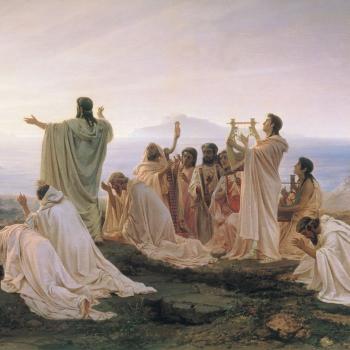
Having laid down a kind of preface in a previous post, I now commence with a brief outline of a minimal case for the rationality of belief in Jesus’ resurrection as summarized by the prominent Evangelical Protestant philosopher William Lane Craig in numerous public lectures (several of which are available online). I’ll be fleshing it out and supplementing it at intermittent intervals for the foreseeable future.
Dr. Craig sets out four propositions about the narrative of the death and resurrection of Jesus that, he claims, are accepted by virtually all scholars of the New Testament, whether believers or unbelievers, liberals or conservatives, Jews or Christians, Catholic or Orthodox or Protestant. I’ll take them in order, with the supporting propositions asserted by Craig:
I. After his crucifixion, Jesus was buried by Joseph of Arimathaea in a tomb near Jerusalem. Thus, its location was known.
- The burial of Jesus is attested in multiple independent sources. One of these is 1 Corinthians 15:4, which is a very early text. (See my previous post.). There seems too little elapsed time to explain this away as mere legend.
- The gospel of Mark, typically regarded as the oldest of the four canonical gospels, also attests to the burial of Jesus. (See Mark 15:42-47.). The other gospels — both John and the other two synoptics — all agree on this point (see Matthew 27:57-60, Luke 23:50-53, and John 19:38-42), and all agree that it was done at the behest of Joseph of Arimathaea. The gospel resurrection narratives diverge in some details after this, but they agree that Jesus was buried and that he was buried by Joseph of Arimathaea.
- Joseph of Arimathaea is unlikely to have been a fictitious Christian invention. For good reason, the early Christians despised the Sanhedrin and the rulers of the Jews in Jerusalem, whom they regarded as having committed a judicial murder. They would not likely have manufactured a hero who was, precisely, a Jewish leader and a member of the Sanhedrin.
- No competing ancient story exists of the disposal of Jesus’ corpse.
II. On the Sunday following Christ’s crucifixion, a group of women came to his tomb and found it empty.
- Curiously but logically, the idea of Christ’s burial (Proposition I) supports the idea of the empty tomb. Why? Because, if the burial place of Jesus was known (as, per Proposition I, it was) and the corpse were still present, the Christian claim of Christ’s resurrection would have been easy to discredit. (To first-century Jews, the concept of resurrection [ἀνάστασις] meant physical resurrection, period.)
- The women’s discovery of the empty tomb is also multiply attested (and the statement in 1 Corinthians 15:4 that Christ “rose again the third day” may also actually refer to the experience of the women on Sunday).
- Mark’s account is very simple and matter-of-fact — quite unlike, say, legendary and greatly embellished later texts like the Gospel According to Peter.
- Early Christians are unlikely to have invented the story about women being the first to discover the empty tomb, because the testimony of women wasn’t well accepted in first-century Judaism. (I discussed this topic somewhat in my remarks to the 2019 FairMormon conference, entitled ““Idle Tales”? The Witness of Women.”). The story is told this way, most likely, because that’s how it really happened.
- The Jewish allegation that the disciples stole Jesus body (Matthew 28:11-15) makes little sense and seem unmotivated if the tomb was, in fact, not empty.
To be continued.












